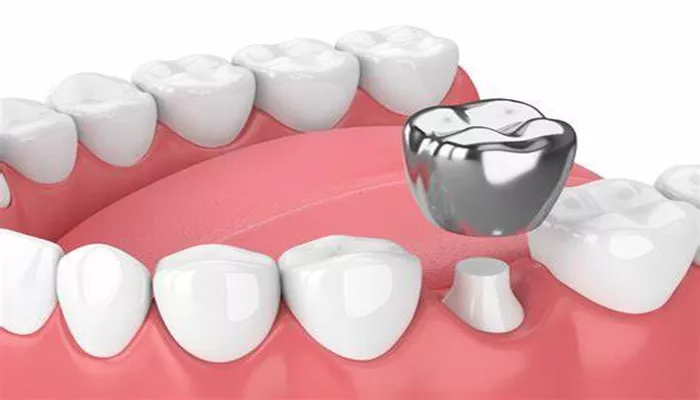Silver tooth fillings, commonly known as dental amalgam, have been a staple in restorative dentistry for over a century.
Their durability and effectiveness in treating cavities make them a popular choice among dentists and patients alike. This article delves into the composition of silver fillings, their properties, and their applications in dental care.
What Are Silver Fillings?
Silver fillings are not purely silver; rather, they are a mixture of metals that include mercury, silver, tin, and copper. The term “silver filling” is derived from the metallic appearance of the amalgam once it is placed in a tooth. These fillings are primarily used to restore teeth affected by decay, especially in areas that endure significant chewing pressure, such as molars.
Composition of Silver Fillings
The composition of dental amalgam is crucial for its performance and longevity. A typical amalgam filling consists of:
Mercury: Approximately 50% by weight. Mercury acts as a binder that allows the other metals to combine and harden effectively.
Silver: Ranges from 40% to 65% depending on the specific formulation.
Silver contributes to the strength and durability of the filling.
Tin: Typically makes up about 25% to 30%. Tin enhances the workability of the amalgam and helps it to bond well with the tooth structure.
Copper: Usually around 6% to 30%. Copper improves the strength and reduces corrosion susceptibility.
Zinc: Present in trace amounts, zinc can help prevent oxidation during the mixing process.
The precise ratios can vary based on specific formulations and manufacturer standards, but these components remain consistent across most dental amalgams.
How Are Silver Fillings Made?
The process of creating silver fillings involves an amalgamation reaction between liquid mercury and powdered metal alloy.
Here’s how it works:
Preparation of Alloy: The metal alloy is prepared by combining silver, tin, copper, and sometimes zinc or other trace metals.
Mixing with Mercury: The powdered alloy is mixed with liquid mercury in a specific ratio (usually 1:1 by weight) to form a thick paste.
Condensation: This paste is then packed into the cavity of a prepared tooth. The dentist shapes it to fit the tooth anatomy.
Setting: The amalgam begins to harden immediately after placement due to a chemical reaction between mercury and the alloy particles.
Full hardness is achieved over several hours.
Properties of Silver Fillings
Silver fillings possess several key properties that make them suitable for dental restorations:
Durability: Amalgam is highly resistant to wear and can withstand significant chewing forces, making it ideal for back teeth.
Longevity: With proper care, silver fillings can last 10 to 15 years or more, often outlasting other types of fillings like composites.
Cost-Effectiveness: Amalgam fillings are generally less expensive than composite fillings due to lower material costs and quicker application times.
Advantages of Silver Fillings
Strength: Their robust nature makes them suitable for areas subjected to heavy chewing pressure.
Less Tooth Removal Required: When placing an amalgam filling, dentists typically need to remove less healthy tooth structure compared to some other materials.
Cost Efficiency: They are usually more affordable than composite or porcelain alternatives.
Disadvantages of Silver Fillings
Despite their advantages, silver fillings also have some drawbacks:
Aesthetic Concerns: The metallic color does not blend well with natural teeth, making them less desirable for visible areas.
Potential for Expansion: Over time, amalgam can expand slightly due to temperature changes, which may lead to cracks in the tooth or surrounding enamel.
Mercury Content: There have been concerns regarding mercury exposure from amalgam fillings; however, extensive research has shown that when properly placed, they pose no significant health risk.
Safety Considerations
The safety of silver fillings has been a topic of discussion for many years due to their mercury content. Regulatory bodies such as the FDA have reviewed numerous studies on dental amalgam and concluded that it is safe for use in most patients.
However, specific populations—such as pregnant women or individuals with certain health conditions—may be advised against using amalgam due to potential risks associated with mercury exposure.
Conclusion
Silver fillings remain a reliable option for restoring decayed teeth due to their durability, cost-effectiveness, and long-lasting nature. While they may not be aesthetically pleasing compared to composite alternatives, their performance in high-stress areas makes them an excellent choice for many patients. Understanding their composition helps both patients and dentists make informed decisions regarding dental care.
In summary:
Silver fillings are composed primarily of mercury, silver, tin, copper, and sometimes zinc.
They are created through a mixing process that results in a durable material suitable for various dental applications.
While they have advantages such as strength and longevity, aesthetic concerns and mercury content are important considerations.

